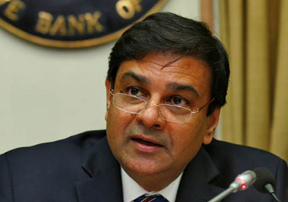 MUMBAI: The Reserve Bank today lowered to 6.7 per cent the economic growth projection for 2017-18 from its August forecast of 7.3 per cent in view of issues with GST implementation and lower kharif output estimates.
MUMBAI: The Reserve Bank today lowered to 6.7 per cent the economic growth projection for 2017-18 from its August forecast of 7.3 per cent in view of issues with GST implementation and lower kharif output estimates.
In its Fourth Bi-monthly Monetary Policy Statement, 2017 -18, RBI said the loss of momentum in first quarter of the current fiscal and the first advance estimates of kharif foodgrains production are early setbacks that impart a downside to the outlook on growth projections.
The implementation of GST so far also appears to have had an adverse impact, rendering prospects for the manufacturing sector uncertain in the short term, it said.
“This may further delay the revival of investment activity, which is already hampered by stressed balance sheets of banks and corporates,” it said.
RBI further said that consumer confidence and overall business assessment of the manufacturing and services sectors surveyed by it weakened in the second quarter (July- September).
On the positive side, firms expect a significant improvement in business sentiment in third quarter, said the Resolution of the six-member Monetary Policy Committee (MPC) put by the central bank on its website.
“Taking into account the above factors, the projection of real GVA (Gross Value Added) growth for 2017-18 has been revised down to 6.7 per cent from the August 2017 projection of 7.3 per cent, with risks evenly balanced,” it said.
Fitch Ratings this week had lowered India’s economic growth forecast for the current fiscal to 6.9 per cent from 7.4 per cent earlier after the GDP growth “unexpectedly faltered” in the April-June quarter.
Asian Development Bank too has lowered the growth projection to 7 per cent for the current fiscal from its earlier estimate of 7.4 per cent.
The real GVA growth slowed significantly in the April- June period of 2017-18, cushioned partly by the extensive front- loading of expenditure by the central government.
GVA growth in agriculture and allied activities slackened quarter-on-quarter in the usual first quarter moderation, partly reflecting deceleration in the growth of livestock products, forestry and fisheries.
Industrial sector GVA growth fell sequentially as well as on a y-o-y basis. The manufacturing sector the dominant component of industrial GVA grew by 1.2 per cent, the lowest in the last 20 quarters.
RBI said the uneven spatial distribution of the monsoon was reflected in the first advance estimates of kharif production by the Ministry of Agriculture, which were below the level of the previous year due to lower area sown under major crops including rice, coarse cereals, pulses, oilseeds, jute and mesta.
The central bank further said that the assessment of food prices going forward is “largely favorable”, though the first advance estimates of kharif production pose some uncertainty.-PTI





